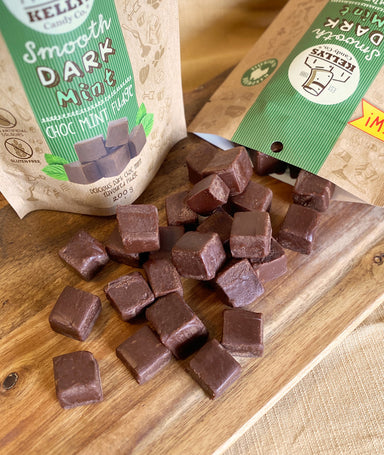I Luv Candi for Beginners
I Luv Candi for Beginners
Blog Article
The 8-Minute Rule for I Luv Candi
Table of ContentsThe Definitive Guide for I Luv CandiThings about I Luv CandiLittle Known Questions About I Luv Candi.The 10-Minute Rule for I Luv CandiThe 20-Second Trick For I Luv Candi
You can also estimate your own revenue by using various assumptions with our monetary prepare for a sweet store. Average monthly income: $2,000 This kind of sweet-shop is often a tiny, family-run organization, perhaps recognized to residents but not attracting great deals of visitors or passersby. The store might provide an option of typical candies and a few homemade treats.
The shop doesn't normally bring unusual or costly products, focusing instead on cost effective deals with in order to keep normal sales. Thinking an ordinary spending of $5 per client and around 400 customers each month, the monthly revenue for this sweet-shop would certainly be approximately. Typical month-to-month profits: $20,000 This sweet-shop advantages from its critical place in a hectic urban location, attracting a lot of customers looking for sweet extravagances as they shop.

Along with its diverse sweet option, this store might additionally offer associated products like present baskets, sweet bouquets, and novelty products, offering multiple revenue streams. The store's area calls for a higher allocate rent and staffing however leads to greater sales quantity. With an approximated typical spending of $10 per customer and concerning 2,000 clients each month, this shop could create.
Getting The I Luv Candi To Work
Found in a major city and tourist destination, it's a huge establishment, usually topped several floors and potentially part of a national or global chain. The shop supplies an enormous variety of sweets, consisting of special and limited-edition products, and merchandise like top quality apparel and devices. It's not simply a store; it's a destination.
The operational costs for this type of shop are significant due to the area, dimension, personnel, and features provided. Presuming a typical acquisition of $20 per consumer and around 2,500 clients per month, this front runner shop might attain.
Classification Examples of Costs Average Regular Monthly Cost (Array in $) Tips to Lower Expenditures Lease and Utilities Store rent, electrical energy, water, gas $1,500 - $3,500 Take into consideration a smaller sized area, negotiate rent, and utilize energy-efficient lights and devices. Inventory Sweet, treats, product packaging products $2,000 - $5,000 Optimize supply monitoring to decrease waste and track preferred things to prevent overstocking.
Get This Report about I Luv Candi
Advertising And Marketing Printed matter, online ads, promotions $500 - $1,500 Emphasis on cost-effective electronic advertising and use social media platforms completely free promotion. Insurance coverage Service responsibility insurance policy $100 - $300 Search for affordable insurance prices and consider bundling plans. Tools and Maintenance Sales register, show racks, repairs $200 - $600 Buy previously owned tools when possible and do routine maintenance to extend devices life expectancy.

This implies that the sweet-shop has gotten to a factor where it covers all its fixed expenditures and begins generating revenue, we call it the breakeven factor. Take into consideration an instance of a candy shop where the regular monthly set expenses normally total up to around $10,000. A harsh quote for the breakeven factor of a sweet-shop, would then be about (since it's the complete set cost to cover), or marketing in between with a cost series of $2 to $3.33 per device.
A Biased View of I Luv Candi
A big, well-located candy shop would obviously have a higher breakeven factor than a little store that does not require much profits to cover their costs. Curious about the productivity of your candy shop?
Another risk is competition from various other candy stores or bigger sellers who could use a broader variety of products at reduced costs (https://www.flickr.com/people/200368981@N06/). Seasonal variations popular, like a decrease in sales after holidays, can likewise impact earnings. In addition, altering customer preferences for much healthier snacks or nutritional restrictions can minimize the appeal of standard candies
Economic downturns that reduce consumer costs can influence candy store sales and productivity, making it vital for sweet shops to handle their costs and adjust to transforming market problems to remain lucrative. These threats are commonly included in the SWOT analysis for a sweet-shop. Gross margins and web margins are crucial indicators used to assess the earnings of a sweet-shop company.
The Best Strategy To Use For I Luv Candi
Essentially, it's the profit remaining after subtracting prices straight relevant to the sweet supply, such as purchase costs from suppliers, production prices moved here (if the sweets are homemade), and team salaries for those included in production or sales. https://www.metal-archives.com/users/iluvcandiau. Internet margin, alternatively, variables in all the expenditures the sweet-shop incurs, including indirect prices like administrative expenditures, advertising, rental fee, and taxes
Sweet-shop usually have a typical gross margin.For circumstances, if your sweet-shop makes $15,000 each month, your gross earnings would be approximately 60% x $15,000 = $9,000. Allow's show this with an example. Consider a candy store that sold 1,000 candy bars, with each bar priced at $2, making the complete earnings $2,000 - camel balls candy. The shop sustains expenses such as acquiring the candies, energies, and incomes for sales team.
Report this page